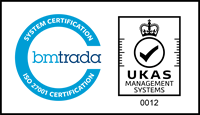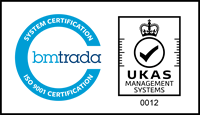Posted on: Wednesday November 16, 2022

An organisation is greater than the sum of its parts. The Apples and Salesforces of the world understand this — which is why they bet big on their people.
These companies have devoted years to perfecting business units which appeal to the crème-de-la-crème of the job market, ensuring that they stand out in a sea of competitors vying for a somewhat scarce supply of business rockstars.
In this article, we’ll look at some of the proven strategies these top businesses use to catch the attention of this top-of-the-line audience — no extravagant Californian campus required.
What is ‘top talent’?
Top talent refers to high-performing employees who get results: consistently producing work of impeccable quality or dazzling clients with exceptional knowledge and communication skills. They also drive culture and engagement, championing the very ethos of an organisation.
These employees typically exhibit the traits you’d expect to see on a buzzword-rich CV: they’re team players and self-starters who routinely go above and beyond, and they relish new challenges.
How to attract top talent
Champion continuous learning
Shifting workplace demographics mean that organisations need to set their sights on the wants and needs of Millennials and Gen Z.
For 91% of the former, which now makes up a significant portion of the UK workforce, career progression is a top priority — though 53% have been left disappointed by a lack of personal development training. And, incidentally, this is the main reason cited for leaving jobs in 2020.
Meanwhile, 76% of Gen Z workers believe that learning is the key to a successful career.
Promote continuous learning by investing in your workforce’s education (e.g., by offering an annual education budget, promising full or partial reimbursement for courses, or implementing a learning management system). As part of this, consider ways to make learning accessible for all staff. Disability inclusion is a key concern for leading employers. This can be achieved through collecting qualitative data that focuses on understanding the real challenges staff may be facing. Additionally, in a world where hybrid working is fast becoming the norm, it’s essential to formulate a learning plan that will factor in different ways of working and learning.
How the pros do it:
- Google leverages its employee network to offer one-on-one training from peers – ensuring that education is highly relevant and personalized
- Amazon covers 95% of tuition costs for employees that have been with them for over a year, if they choose to pursue a certificate or diploma in a high-demand field
- Marriott International provides aspiring leaders with the opportunity to enter a 12–18-month program that prepares them for management positions.
Strengthen your culture
There’s a reason the companies that attract the best of the best consistently receive awards for being the best places to work: they’ve cultivated a culture that appeals to top performers.
77% of adults surveyed in a Glassdoor report consider culture before applying. To underestimate its impact (and overlook the related discipline of employer branding) is to fence your organisation off from a vast range of talent.
Culture is something that businesses must build on iteratively – implementing small changes over time rather than forcing a sudden upheaval. Wondering where to start? Check out our quick-start guide to organisational culture.
How the pros do it:
- Microsoft takes care to align employee’s personal goals with its business objectives, fosters a collaborative environment, and rewards hard work
- EY has built a workplace where employees take great pride in their work, are given a lot of responsibility, and look up to management they deem ‘honest and ethical’
- Experian scores highly on the same strengths: workers value the responsibility they’re given, the business’s ethics and good work-life balance
The upshot of all this? Top talent thrives in a workplace that cares for its employees – while remaining challenging enough to mould their progression.
Want to get insights into how to foster the perfect environment for rockstar employees? Get in touch with one of our benefits experts today or subscribe to our future blogs.
Cost vs Value – What Really Matters in Health Benefits?
When it comes to creating employee health benefits, there’s always a tug-of-war between keeping costs low and focusing on the actual value those benefits bring.
Posted on: 11 April 2025 by Andrew Walker, New Business Development Director
Top Tips to Improve a Misfiring Recognition Strategy
Whether you’re a professional footballer, engineer or care worker, happiness at work relies on feeling valued, appreciated and respected.
Posted on: 28 March 2025 by Andrew Walker, New Business Development Director
Brace Yourselves: Reward Storm Incoming
In even the most optimistic assessment of the current situation, it is hard to foresee a situation where a substantial portion of workers are not left underwhelmed by their pay offers in 2025.
Posted on: 13 March 2025






